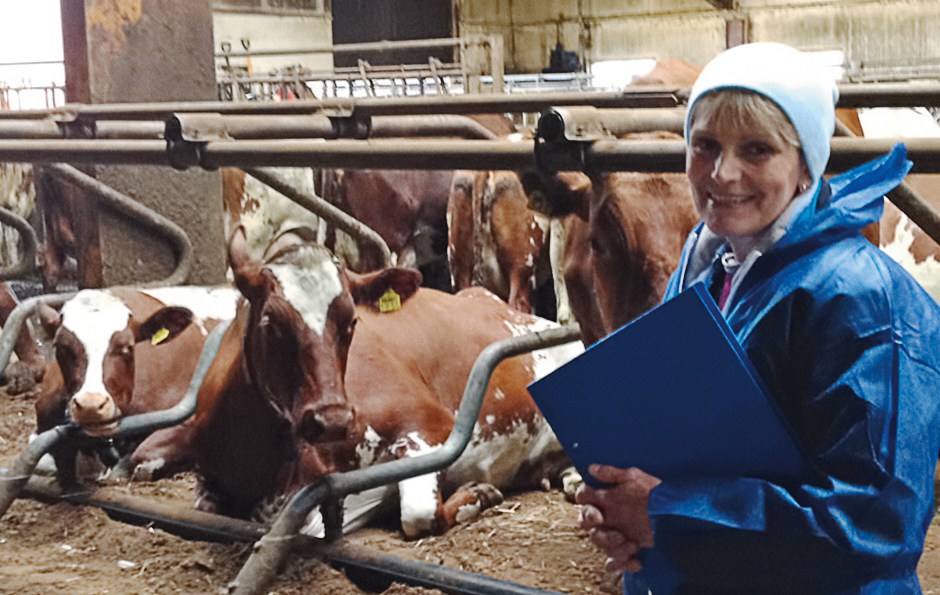Mary Creek visiting Rokkila farm in Lammi, Finland. (foto: Tiina Mitikka)
Mary Creek, president of World Ayrshire Federation, visited Finland this spring. She was interviewed by Olga Smirnova from Faba.
Can you tell our readers about your own herd?
– The herd we are milking is 170 cows right now, including 110 Ayrshires and 60 Holsteins. The herd is located 75 miles west from Washington DC in very urban area, so we grow houses more than we grow crops. We must consider all those people around us.
– We have always been involved with the cattle, and I am the third generation breeding Ayrshires. The cows are producing very well. The average yield of our Ayrshire is 20 000 lb with 4,1 fat and 3,4 protein, and for Holseins it is 24 500 lb with 3,8 fat and 3,2 protein, which is very good component yield for Holstein.
Why Ayrshire?
– Well, as I said I am the third generation. Years ago it was just a farm with “general” cows. Our family was convinced by a friend that they should specialize and that the Ayrshires would be a very profitable choice and a good breed to work with. And since then we just have a strong appreciation for them because of the strong health, their durability and their good capability to milk when we care of them.
What is the future of the breed on your opinion?
– This is an interesting question. I have tried to travel and to visit all world federations to discuss this, to see what is going on in each country and what are their visions and goals. I have found out that four countries, including US, that I have visited in last 6 weeks put the priority into their lists to increase the production. And this is related to the competition with Holsteins indeed.
– We all understand, and we have talked about this during my stay in Finland, that we need to stay competitive with Holsteins, we need to keep close enough to at least same profit level – or better! But we also must make sure that we proceed with keeping up with traits that are unique making Ayrshire profitable – longevity, number of lactations, somatic cells score; breeding and feeding efficiency. We need the commercial dairymen to realize that it is more than just milk that makes profit.
What do you think is the role of the World Federation in this?
– Of course WAF has had the breed promotion as it’s main role, but seems to be taking on more active role in the dairy industry. It must make more efforts in developing programs and helping our members to make sure that they are recognized and appreciated.
– I have heard the member countries encouraging us to do more, to become more visible, not that much just social organization that the federation had been in the past, to be more actively involved in the industry.
What are your impressions of this visit to Finland?
– So far I have seen only two herds, the visit is going on. I must say that it is comfortable that you come and find out that your goals are in general the same as everyone else’s. It is great that people put a lot of energy into achieving these goals with the breeding program and developing your genomic. Your testing program and the heifers’ program is very innovative. You are moving forward and keeping Ayrshire competitive in pace with other breeds.
– The two herds I visited were very different, but yet there are cows that produce a huge amount of milk and many cows that can have 4-5-6 lactations and high components especially protein. Powerful cows with deep body, a lot of cows that have the traits you would expect good cows to have.
Do you have any greeting to our breeders?
– Yes. Let’s go forward!
Maryn haastattelun suomeksi löydät kesäkuun Nauta-lehdestä 3/2016!

